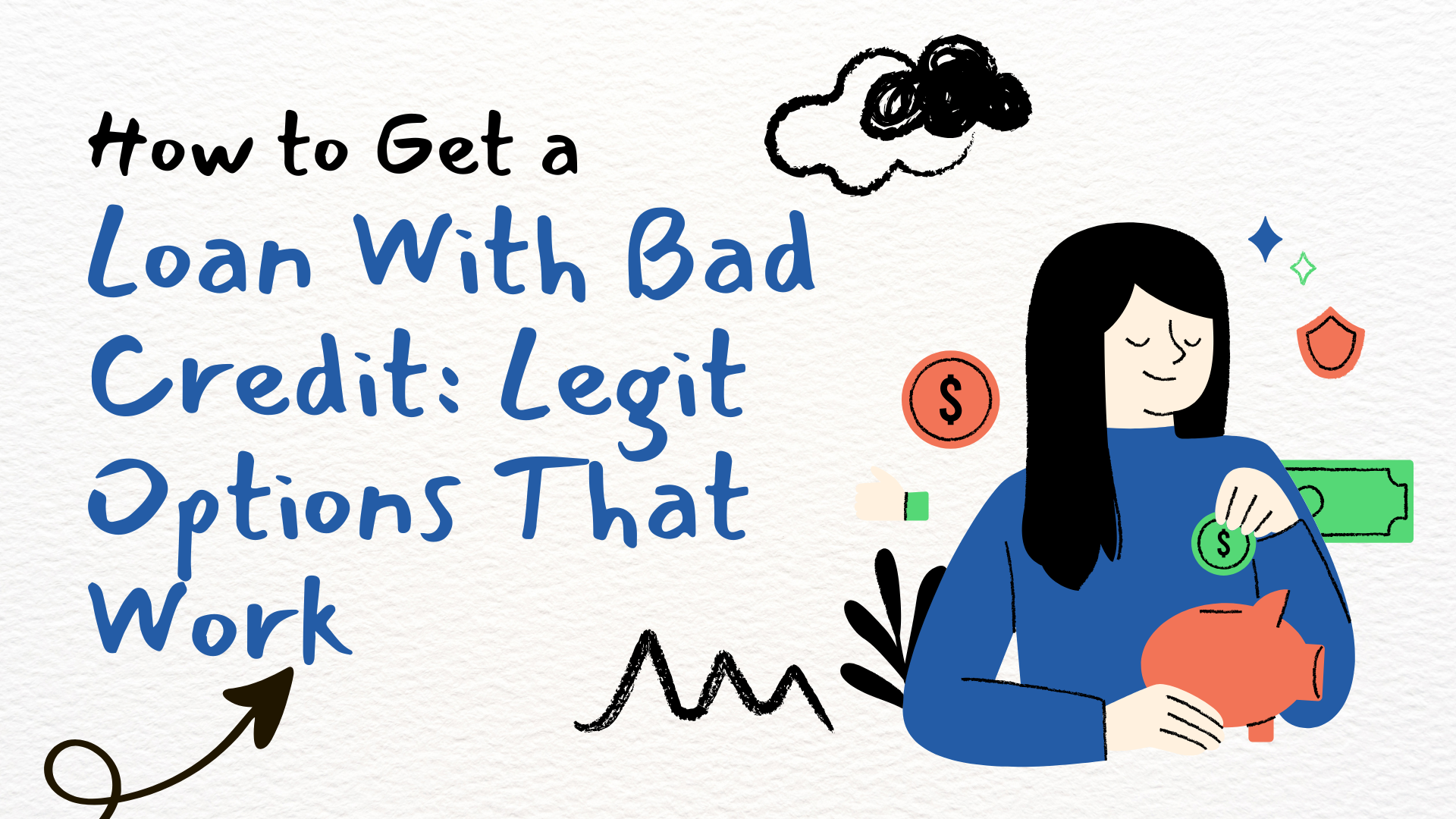Having bad credit doesn’t mean you’re out of options. While a low credit score can limit your borrowing power, it’s still possible to secure a loan with bad credit—provided you know where to look and what to avoid. In 2025, lenders are using alternative data, flexible terms, and technology to expand access to credit without putting borrowers at risk of predatory lending.
This guide explores the best legit options to get a loan with bad credit, what to avoid, and how to improve your chances of approval.
What Is Considered Bad Credit in 2025?
In most cases, a credit score below 580 is considered poor or “bad” credit. Scores between 580 and 669 are labeled “fair,” and anything above that opens more traditional borrowing options.
Bad credit can result from:
-
Missed or late payments
-
High credit utilization
-
Collections or charge-offs
-
Bankruptcy or foreclosure
-
Limited or no credit history
Legit Loan Options for Bad Credit Borrowers
Let’s break down the most trustworthy ways to get a loan when your credit is less than ideal.
1. Online Lenders That Accept Low Credit Scores
Some fintech platforms specialize in working with low-credit borrowers and use non-traditional data like employment history or education.
Top Online Lenders for Bad Credit:
-
Upstart – Uses AI to assess risk; minimum score ~300
-
Avant – Accepts credit scores as low as 580
-
OneMain Financial – No minimum credit score; offers in-person service
-
LendingPoint – Scores as low as 600 accepted
Tip: Compare APRs, fees, and repayment terms before accepting any offer.
2. Secured Personal Loans
These loans require collateral—like a car, savings account, or certificate of deposit—which reduces the lender’s risk.
Pros:
-
Easier approval with poor credit
-
Lower interest rates compared to unsecured loans
Cons:
-
You risk losing your asset if you default
Common sources: Credit unions, community banks, and some online lenders.
3. Credit Union Loans
Credit unions are nonprofit financial institutions that often have more flexible lending policies. If you’re a member, you may qualify for a loan even with bad credit.
Why They’re a Good Choice:
-
Lower interest rates
-
Personalized approval process
-
More forgiving underwriting
You’ll usually need to be a member for a few months before applying.
4. Loans With a Co-Signer
If a trusted friend or family member with good credit agrees to co-sign, your odds of approval and your loan terms can improve significantly.
What to Know:
-
You both share responsibility for repayment
-
Missed payments hurt both credit scores
Only choose this option if you and your co-signer fully understand the risks.
5. Peer-to-Peer Lending Platforms
P2P platforms match borrowers with individual investors instead of banks. These lenders may take a broader view of your financial profile.
Popular P2P Lenders:
-
Prosper
-
LendingClub
-
Funding Circle (for small business loans)
Keep in mind: You might face higher interest rates or origination fees.
6. Government-Backed Loans (Specific Situations)
In certain cases, you may qualify for government-supported loans designed for specific needs:
-
FHA Title I Loans for home improvements
-
Small business loans (SBA Microloans)
-
Student loans (federal loans don’t require good credit)
These programs often come with income or eligibility requirements, but they are far safer than payday loans.
Loan Options to Avoid With Bad Credit
When you’re desperate, it’s easy to fall into predatory traps. Steer clear of:
-
Payday loans – Extremely high interest (300%+ APR) and short repayment windows
-
Title loans – Risk losing your vehicle
-
No-credit-check loans – Usually come with hidden fees and predatory practices
-
Loan scams – Any lender demanding upfront fees is likely fraudulent
Red Flags: Unsecured websites, no physical address, no customer service line, or guaranteed approval claims.
How to Increase Your Chances of Approval
Even with bad credit, you can improve your loan eligibility with these practical steps:
1. Check Your Credit Report for Errors
Dispute any inaccuracies with the credit bureaus (Equifax, Experian, TransUnion).
2. Reduce Existing Debt
Lowering your credit utilization ratio improves your score and borrowing profile.
3. Show Proof of Stable Income
Lenders want reassurance that you can repay the loan—pay stubs, bank statements, or tax returns can help.
4. Apply for Prequalification
Many lenders offer a soft credit check prequalification to see if you’re eligible without hurting your score.
5. Borrow the Smallest Amount Needed
Smaller loan requests are easier to approve and less risky for both parties.
FAQs: Loan With Bad Credit in 2025
Q: What is the easiest loan to get with bad credit?
A: Secured loans and online lenders like Upstart or Avant typically offer the easiest approval paths.
Q: Can I get a loan without a credit check?
A: It’s possible but risky. Most no-credit-check loans come with sky-high interest rates and shady terms. It’s best to work with legit lenders who use soft checks for prequalification.
Q: Will taking a loan improve my credit score?
A: Yes—if you make on-time payments and don’t default. Personal loans can diversify your credit mix and reduce credit card debt if used wisely.
Final Thoughts: Borrow Smart, Not Desperate
Getting a loan with bad credit is absolutely possible in 2025—if you know where to look and how to protect yourself. Focus on legit, transparent lenders, and avoid high-interest traps that can spiral into long-term debt.
Compare your options carefully, only borrow what you need, and work on improving your credit to access better terms in the future.
